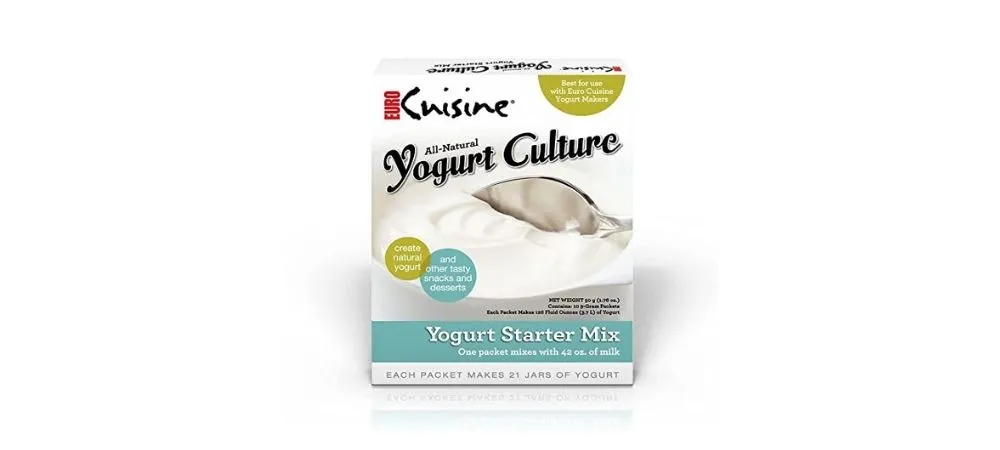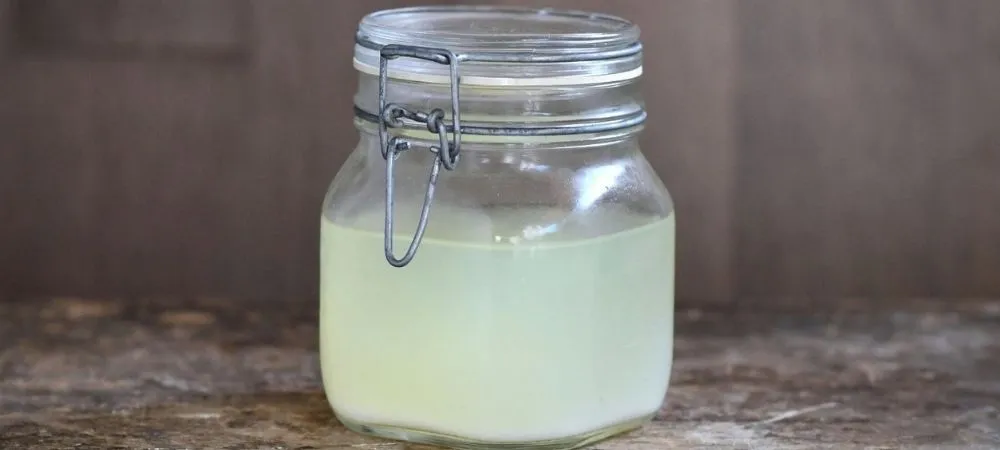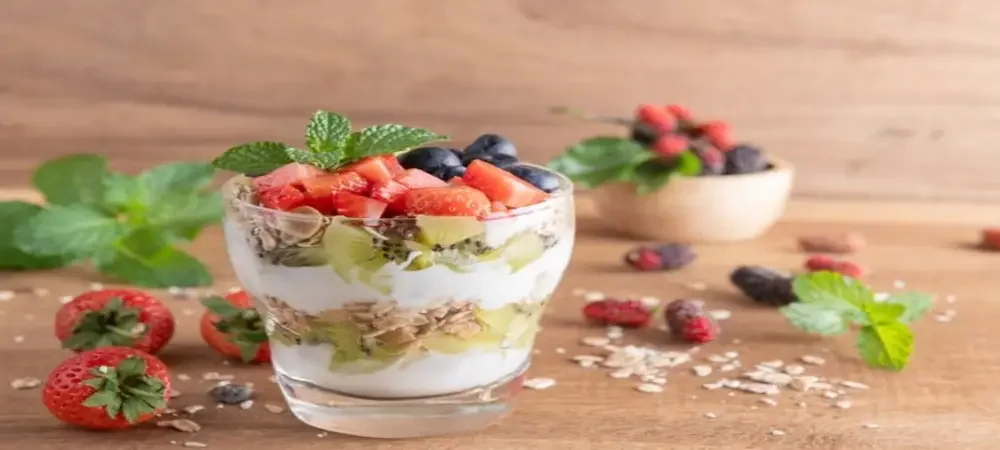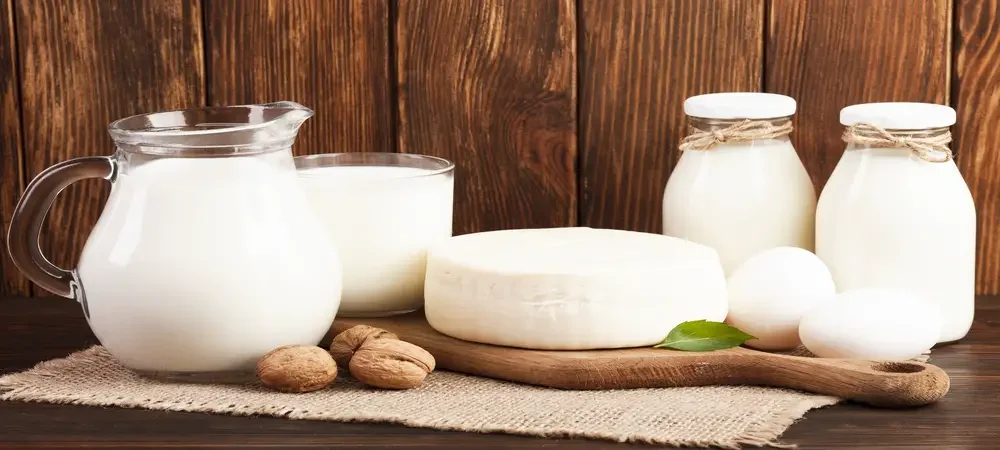Yogurt (noun) is a food produced by the bacterial fermentation of milk. The bacteria that produce yogurt are known as “yogurt cultures”. Plain yogurt is full-fat milk fermented with Streptococcus thermophilus and Lactobacillus bulgaricus for 24 hours at 42 degrees Celsius. The fat content in yogurt is directly from milk, and therefore no additional fat is required. However, one may argue that the term ‘yogurt’ should not be used to describe a product made from milk with added sugar or other sweeteners as well as fruit purees to make a low-fat variety of yogurt, i.e., fruit on the bottom yogurt (Gopalan C. Nutritive Value of Indian Foods. 1st ed. Hyderabad: National Institute of Nutrition, ICMR; 2012).
Related Posts:
- Can You Freeze Greek Yogurt?
- Regular Yogurt Vs Greek Yogurt – Which is better?
- How to Eat Plain Greek Yogurt?
- How to Sweeten Greek Yogurt?
- What are the Benefits of Greek Yogurt?
- How Long Does Greek Yogurt Lasts?
- Greek Yogurt Vs Turkish Yogurt – What is the Difference?
- Is Greek Yogurt Bad for Cholesterol?
Dahi (noun), also known as curd, is an Indian dairy food prepared by the bacterial fermentation of milk. The bacteria that produce dahi are known as “Dahi culture” and usually consist of Lactobacillus delbrueckii subsp. Bulgaricus, Streptococcus salivarius subsp. thermophilus and sometimes Lactobacillus acidophilus or Leuconostoc mesenteroides subsp. mesenteroides (Gopalan C. Nutritive Value of Indian Food. 1st ed. Hyderabad: National Institute of Nutrition, ICMR; 2012).
Both the Indian Dahi and Greek yogurt share a similar nutritional profile since both are fermented milk products with added sugar or other sweeteners to create low-fat varieties. Both yogurts contain proteins, calcium, phosphorus, riboflavin (vitamin B2), vitamin B12, and B6.
Greek yogurt differs from dahi in the way it is processed. Dahi is made by bacterial fermentation of milk at room temperature. In contrast, Greek yogurt is made by heating to a higher temperature before being put in cold storage (Achaya K. Indian Food: A Historical Companion . University of California Press; 1994). The heating process makes Greek yogurt thicker and more prosperous than dahi. For this reason, neither yogurt should be substituted for the other one unless made from scratch at home.
Can Greek yogurt be used in Indian cooking?
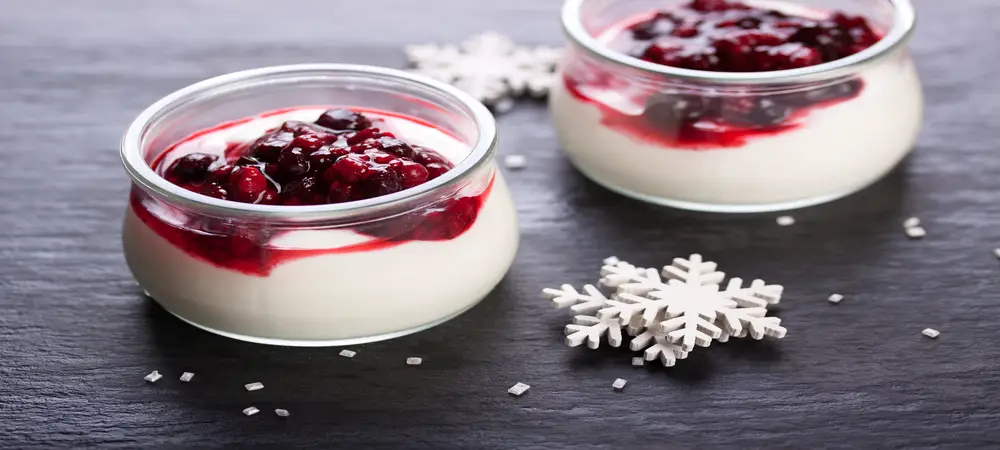
Greek yogurt can be used in Indian cooking to replace whole-fat or low-fat dahi. The former is relatively thick and rich because it has a higher fat content, whereas the latter is somewhat thinner and lighter inconsistency. Due to this difference, one may need to adjust the quantities of spices added when using yogurt as a cooking ingredient.
Conclusion
Greek yogurt and dahi are similar products as they are both made by bacterial fermentation of milk. However, Greek yogurt is thicker and more prosperous than dahi; this makes them not entirely interchangeable in some applications such as cooking.

